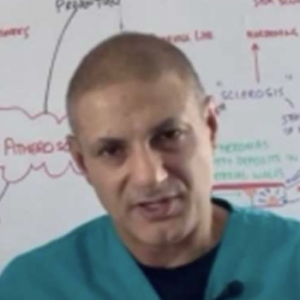You may have overheard many middle-aged men talking about TRT and wondered what they were talking about. They seem enthusiastic and animated when they mention these three letters. What is TRT?
Table of contents
- What is TRT?
- Testosterone Replacement Therapy (TRT)
- Symptoms of Low Testosterone
- The Andropause or late-onset hypogonadism
- Women and HRT versus men and TRT
- HRT versus TRT
- TRT in the UK
- The problem with testosterone reference ranges
- The ADAM questionnaire
- TRT and prostate cancer
- Go not gently into that good night
- References:
-
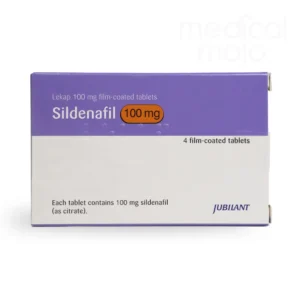 Sildenafil 100mg Tablets£9.99 – £31.99
Sildenafil 100mg Tablets£9.99 – £31.99 -
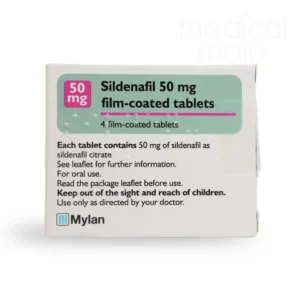 Sildenafil 50mg Tablets£7.99 – £31.99
Sildenafil 50mg Tablets£7.99 – £31.99 -
 Sildenafil 25mg Tablets£5.99 – £21.99
Sildenafil 25mg Tablets£5.99 – £21.99
What is TRT?
You wonder what it is about these three letters that could be so captivating. Turning to your trusty friend, Google, you enter the three letters TRT in the search box and are surprised when the first result returned is TRT World. Confused, you begin your next prompt in Google, “What is TRT World?”. A few nanoseconds later, Google informs you that TRT World stands for Turkish Radio and Television Corporation (TRT).
What is TRT World?
Wikipedia helpfully informs you that TRT World is a Turkish state international news channel broadcast 24 hours a day in English from Istanbul.
You find it strange that this foreign news station could so captivate these men. They didn’t look Turkish to you, so what interest could they have in following an international Turkish News channel?
As you ponder this question, your eyes drift down over the search results. You come across a different interpretation of Google’s first choice (hopefully this blog!): Testosterone Replacement Therapy, AKA ,TRT. Bingo!
Testosterone Replacement Therapy (TRT)
Yes, TRT stands for testosterone replacement therapy, and the reason that so many middle-aged men are talking about it is that it can literally give you your life back.
The most significant trend in men’s health over the last ten years or so has been the recognition of the importance of optimal testosterone levels for the overall health and well-being of ageing men.
What are hormones?
Testosterone is the hormone produced by the testes. But what are hormones exactly?
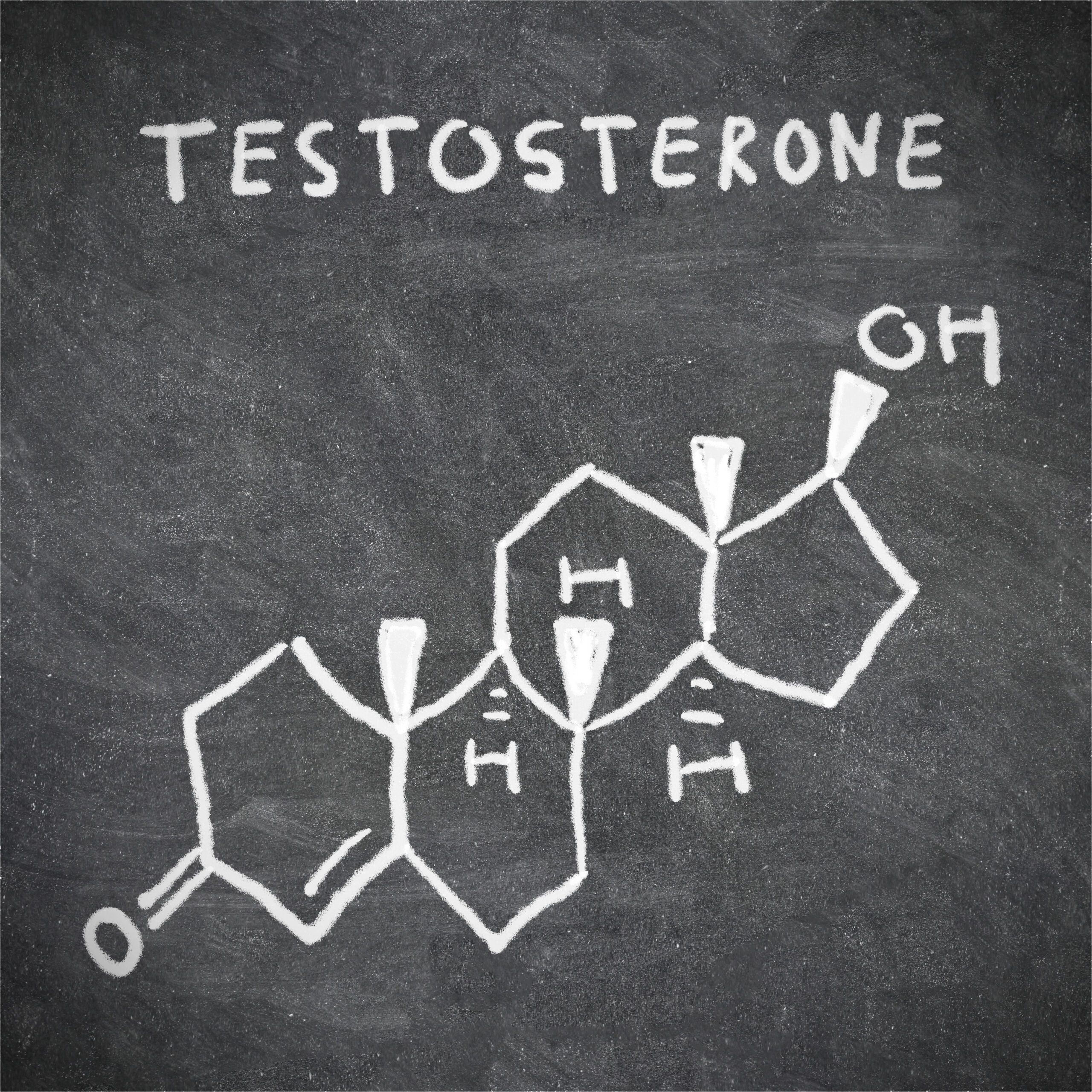
The human body is made up of trillions of cells, from the top of your head to the tips of your toes, which begs the question of how they communicate with each other.
One way cells converse is via chemical messengers called hormones. These hormones are dispatched in response to some signal. They then travel to the recipient cell, where they attach or dock with a receptor either on the surface or inside the cell.
Once the hormone has bound to the receptor, it relays the message to the cell, which can then take the necessary action.
Testosterone Replacement Therapy, or TRT, is a medical treatment which aims at returning men’s testosterone levels back to the physiological range [1].
Testosterone in the form of gels and injections can increase these hormone levels, thereby providing relief from many of the symptoms encountered with low testosterone.
Symptoms of Low Testosterone
The Fourth International Consultation for Sexual Medicine (ICSM) [2] provided the following recommendations for the clinical diagnosis of testosterone deficiency based on observed signs and symptoms:
- Sexual dysfunction, especially low sexual desire, reduced morning and night-time erections, and erectile dysfunction [2].
- Fatigue
- Sleep disturbance,
- Loss of physical strength,
- Reduced energy and motivation,
- Depressed mood,
- Visceral obesity,
- Reductions in muscle mass,
- Reductions in bone mineral density (BMD),
- Brain fog,
- Reduced body hair,
- Decreased testicular size and gynaecomastia, but these are not always present,
- Fine wrinkling of the skin, especially around the mouth.
These symptoms were once accepted as part and parcel of growing old. You just had to grin and bear it and try not to complain. That was in the past, but now we understand this process better and have devised a solution to improve the quality of life as we age. This miraculous elixir of life is…yes, you guessed it, TRT!
The Andropause or late-onset hypogonadism
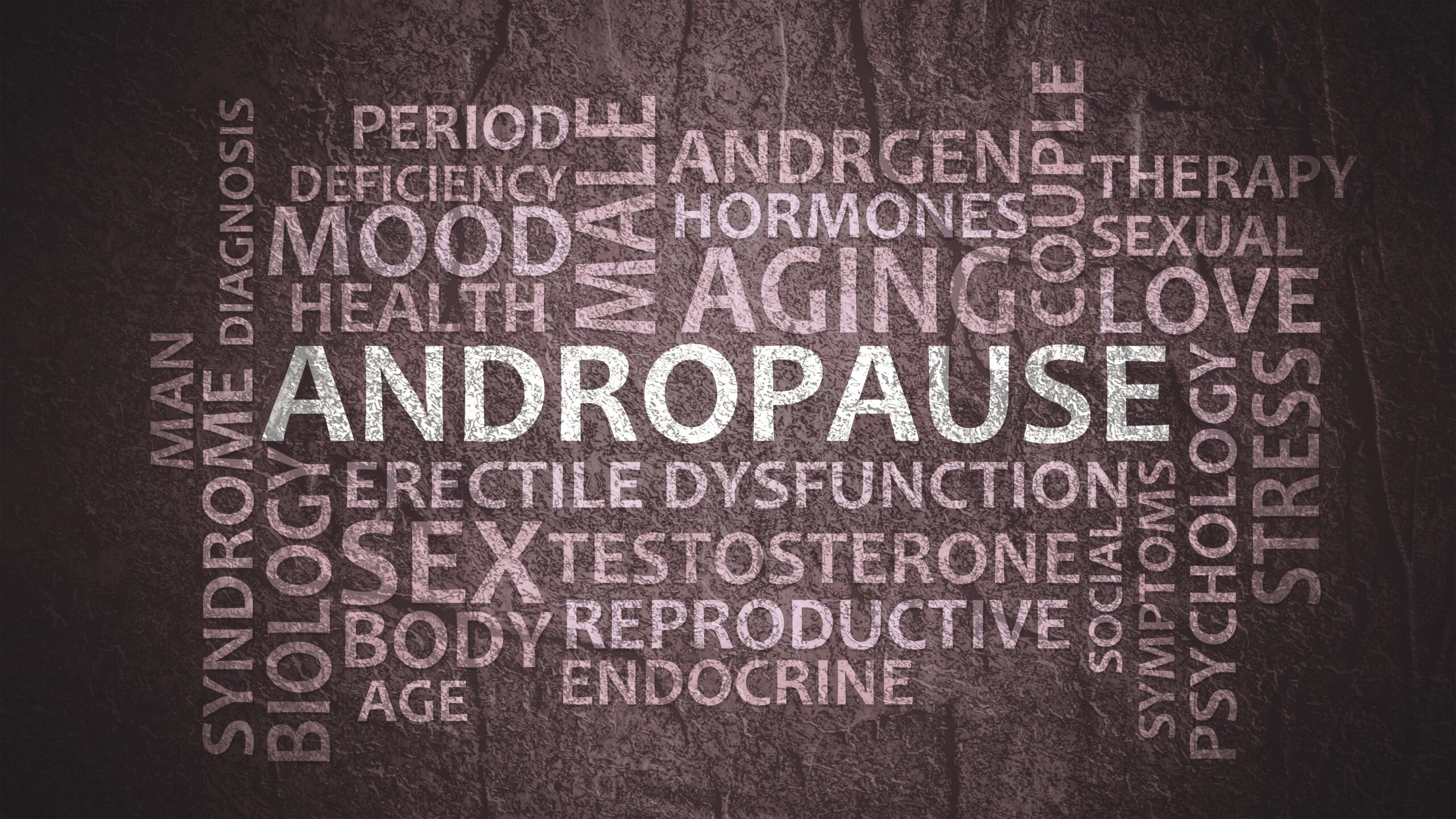
Andropause, as it has become known, does not have the same rapid and abrupt onset of symptoms as the female equivalent, the menopause.
The term, andropause has become the bane of many doctors, who often avoid the term “andropause” because it can be misleading.
Unlike menopause in women, which is a well-defined and rapid decline in reproductive hormones, the decrease in testosterone levels in men, sometimes referred to as andropause, tends to be gradual and varies significantly between individuals.
The term also suggests that all men will experience a significant drop in testosterone, which is not universally the case. Instead, medical professionals prefer terms like “late-onset hypogonadism” or “age-related testosterone decline” to more accurately describe the condition and its varied progression.
Women and HRT versus men and TRT
Women began hormone replacement therapy (HRT) earlier than men started testosterone replacement therapy (TRT) primarily because the effects of menopause are more abrupt and universally experienced, leading to clearer symptoms and a more immediate need for intervention.
Menopause causes a rapid decline in oestrogen, resulting in symptoms like hot flashes, bone density loss, and mood swings, prompting earlier development and adoption of HRT.
In contrast, testosterone decline in men is more gradual and less consistent, delaying the recognition and widespread use of TRT for addressing symptoms related to aging and testosterone deficiency.
Andropause, as it has become known, does not have the same rapid and abrupt onset of symptoms as the female equivalent, the menopause.
The andropause can feel like dragging the equivalent of your body weight up a mountain, with the load gradually getting heavier.
The menopause, on the other hand, is like falling off a cliff. These precipitous rapid falls in female hormone levels make the diagnosis of menopause easy.
Unfortunately, men are told that the symptoms they feel, brain fog, fatigue, lack of strength and libido, are a part of growing old. Chin up, old boy, and learn to live with it.
The rise and fall of Premarin
Many millions of women have received hormone replacement therapy (HRT), such as the conjugated oestrogen Premarin, to help cushion the blow.
However, their respite was short-lived due to a study carried out in 2002 called the Woman Health Initiative, which found increased rates of breast cancer, coronary heart disease, stroke, and venous thromboembolism and decreased rates of hip fracture and colorectal disease but no “global” benefit.
They concluded that combined oestrogen and progestogen are unsuitable for preventing chronic diseases [3].
As a consequence, the number of prescriptions issued for Premarin has drastically reduced.
Flaws of the 2002 Women’s Health Initiative study on HRT
The 2002 Women’s Health Initiative study on HRT had some flaws, including focusing on older women who were past menopause, which might have exaggerated the risks.
It also didn’t differentiate between types or doses of HRT.
Resurgence of HRT
Since then, new research has shown that HRT can be safer and more beneficial when started earlier and tailored to individual needs.
Interest in HRT has resumed because of this updated understanding, the availability of bioidentical and compounded HRT options, and the role of social media in spreading new information and personal stories.
For a woman to seek treatment for the menopause is not seen as uncommon, and it has come to be socially accepted that the symptoms of low oestrogen or the menopause should be treated.
HRT over the Counter
HRT has become so mainstream that women can buy an estradiol vaginal tablet over the counter from pharmacies, called Stella, without a prescription. It is still many years before this can even be comtemplated for men and TRT.
What does Premarin stand for?
We mentioned Premarin, a form of HRT for women. Ever wondered where the name came from?
Pregnant mare urine. Yes, you read that right. The oestrogens for “human” women undergoing the menopause were supplied with oestrogens derived from horses!
This has led to the growth of bioidentical hormones derived from plant sources, which are marketed as more closely mimicking human hormones.
Staying on the topic of where we get medicines from, Pregnyl, a form of HCG that can be used to stimulate the testes to produce testosterone, was also derived from urine. However, on this occasion, the HCG was extracted from pregnant women. At least we stayed in the same species for this hormone.
Recombinant DNA technology
The thought of taking a medicine made from refined wee is not very appealing. However, with the development of recombinant DNA technology, scientists can easily get bacteria to produce HCG and other similar peptides.
When used in TRT, HCG is used because it resembles the hormone lutenising hormone, which is sent from the brain to the testes to start testosterone production.
HRT versus TRT
For women, HRT can be started in primary care, which means your GP. Unfortunately, for men, TRT, according to the guidelines, can only be started in secondary care after review by an endocrinologist.
To learn more about this discrepancy between the sexes, read our blog: Can I get TRT on the NHS?
Attitudes to male hypogonadism
Women are more in tune with their bodies and have been more proactive in seeking help for the symptoms of the menopause.
Unfortunately, the same cannot be said for men.
Any suggestion of obtaining TRT to relieve symptoms of andropause gives the impression that the man is having a mid-life crisis, and as soon as he receives his TRT, he will be off to the showroom for his brand-new motorbike.
A lot of work needs to be done to make it more socially acceptable for men to obtain TRT for their andropause symptoms.
-
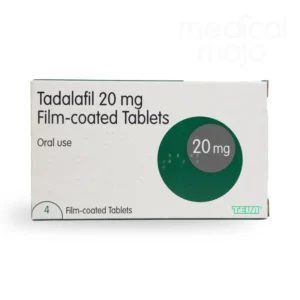 Tadalafil 20mg tablets£8.99 – £32.99
Tadalafil 20mg tablets£8.99 – £32.99 -
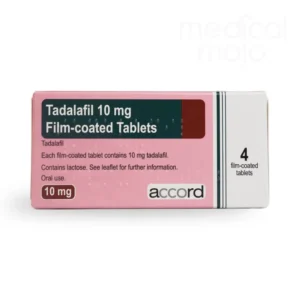 Tadalafil 10mg tablets£8.99 – £31.99
Tadalafil 10mg tablets£8.99 – £31.99 -
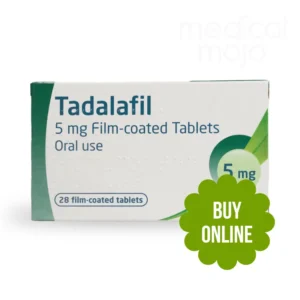 Tadalafil 5mg tablets£17.99 – £45.99
Tadalafil 5mg tablets£17.99 – £45.99
Social Media and TRT
One of the most significant influences on TRT has probably been the growth of podcasts and social media. It provides a platform for discussing andropause or low testosterone. This has gone a long way toward removing the stigma and has helped to slowly move TRT into the mainstream.
Progress is being made; in the USA, for instance, more and more men are taking advantage of the availability of TRT. It has become more acceptable for ageing men to use TRT to help with symptoms of low testosterone.
This has led to more and more doctors in the USA becoming experts in TRT and pharmacies becoming specialists in manufacturing bespoke TRT products. A huge number of specialist compounding pharmacies have been set up, dealing exclusively with tailored hormonal solutions for menopause and andropause.
TRT in the UK
In the UK, however, we are still playing catch up. Unfortunately, there is still a social stigma surrounding TRT, and many doctors are reluctant to initiate treatment because they are not well-versed in TRT.
The problem with testosterone reference ranges
Then, there is the overreliance on treating numbers rather than people. One of the most significant issues faced when seeking TRT is the reliance on reference ranges, which are based on samples from men of all ages; they are not age-adjusted.
This means that you have no way of knowing what the optimum testosterone level is for a man of your age. This is why it is important to treat the individual, not the number. To learn more, read our blog: The TRT skeptic.
The ADAM questionnaire
A questionnaire kike the ADAM questionnaire, the Androgen Deficiency in the Aging Male, is a valuable aid for diagnosing low testosterone symptoms.
Androgen deficiency in Ageing males’ questionnaire
- Do you have a decreased libido (sex drive)?
- Do you suffer from a lack of energy?
- Have you noticed a decrease in strength and or/ endurance?
- Have you lost height?
- Have you noticed a decreased “enjoyment of life”
- Are you often sad and/or grumpy?
- Are your erections less strong than they used to be?
- Have you noticed a recent deterioration in your ability to play sports or exercise?
- Do you find yourself falling asleep after dinner?
- Has there been a recent deterioration in your work performance?
If you answered “YES” to questions 1 or 7 or any 3 other questions, you may be suffering from testosterone deficiency.
Without taking the symptoms into consideration, many men are fobbed off when their levels are normal. However, they may be still suffering from symptoms of low testosterone.
Things are slowly improving. The misconceptions that many doctors have regarding TRT are being systematically dismantled, as a growing body of evidence shows the clear benefits of TRT in improving the quality of life in ageing men [4].
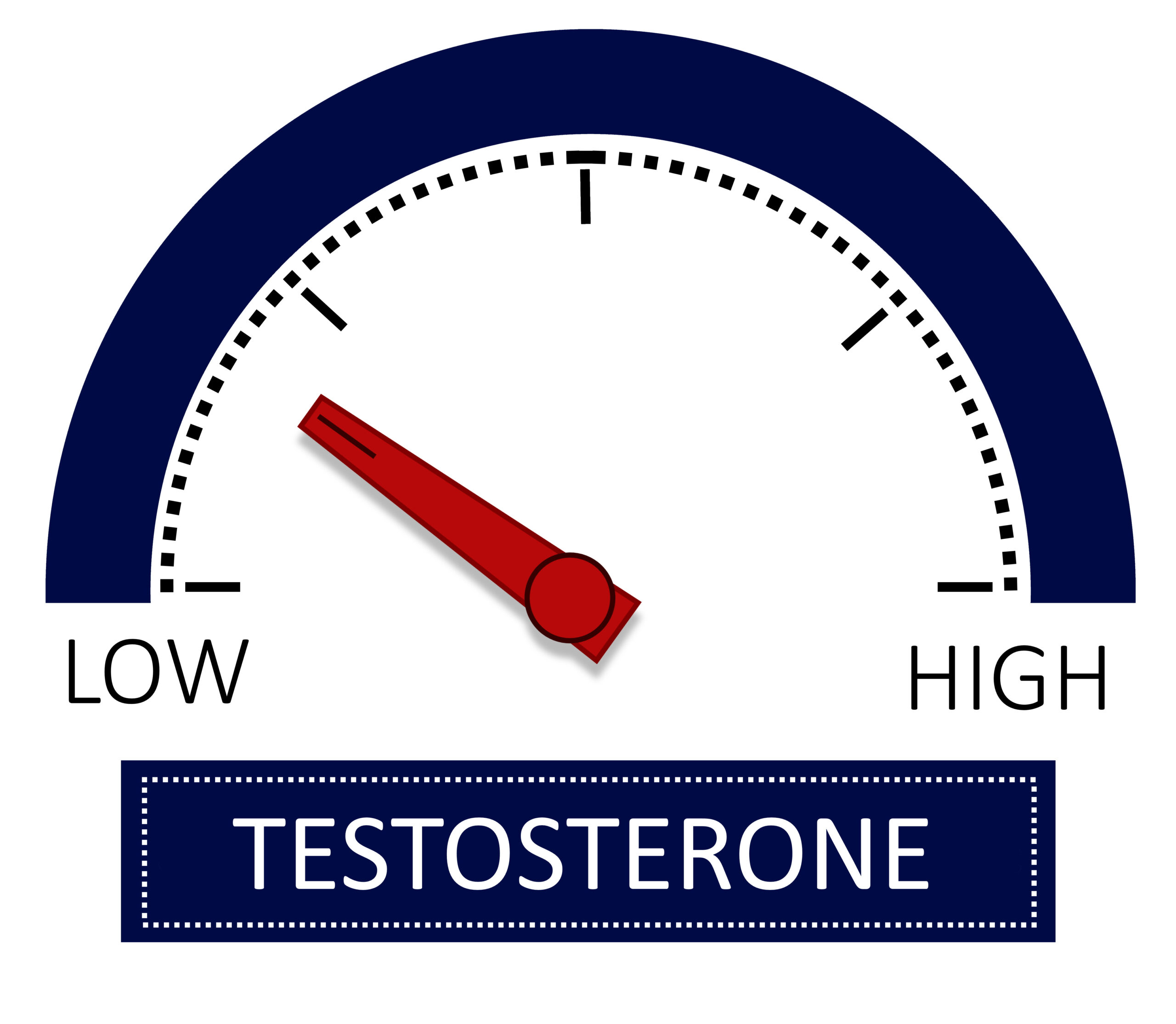
TRT and prostate cancer
Another reason which goes some way to explain the hesitancy of doctors to initiate TRT is the widespread belief that testosterone causes prostate cancer.
However, when you dig a bit deeper, you will discover that this theory dates back to 1941, the work of Huggins and Hodges. They reported that marked reductions in testosterone by castration or oestrogten treatment caused metastatic prostate cancer to regress, and administration of exogenous T caused the prostate cancer to grow [5].
Saturation model of prostate cancer
However, numerous subsequent reports revealed no prostate cancer progression with testosterone administration, and some men even experienced subjective improvement, such as resolution of bone pain.
A new theory called the saturation model finally put the nail in the coffin of the androgen hypothesis [6,7].
Go not gently into that good night
Maybe the Welsh poet Dylan Thomas was an early advocate of TRT?
Do not go gentle into that good night,
Old age should burn and rave at close of day;
Rage, rage against the dying of the light.
That is one hell of a strap line for TRT. Low testosterone becomes a dark shadow hovering over you as you age. Slowly grinding you down with each passing day as your testosterone naturally declines.
In my opinion, this is not growing old gracefully. It is not living a full and constructive life. As I tell my clients, when you are young, you have energy but no wisdom. But when you grow old, you have wisdom but no energy. Imagine what you could achieve with both.
Remember the words of Dylan Thomas:
Do not go gentle into that good night,
Old age should burn and rave at close of day;
Rage, rage against the dying of the light.
If you are concerned about low testosterone, or even to find out more, please contact us for a FREE consultation.
Disclaimer: This information is for educational purposes only and not a substitute for professional medical advice.
References:
- Hackett G, Kirby M, Rees RW, Jones TH, Muneer A, Livingston M, Ossei-Gerning N, David J, Foster J, Kalra PA, Ramachandran S. The British Society for Sexual Medicine Guidelines on Male Adult Testosterone Deficiency, with Statements for Practice. World J Mens Health. 2023 Jul;41(3):508-537.
- Khera M, Adaikan G, Buvat J, Carrier S, El-Meliegy A, Hatzimouratidis K, et al. diagnosis and treatment of testosterone deficiency: recommendations from the Fourth International Consultation for Sexual Medicine (ICSM 2015) J Sex Med. 2016;13:1787–1804
- Writing Group for the Women’s Health Initiative Investigators. Risks and benefits of oestrogen plus progestin in healthy postmenopausal women. Principal results from the Women’s Health Initiative randomised controlled trial. JAMA 2002; 288: 321–33.
- Zitzmann, M. Testosterone, mood, behaviour and quality of life. Andrology. 2020; 00: 1– 8.
- Huggins, C., Stevens, R.E. and Hodges, C.V., 1941. Studies on prostatic cancer: II. The effects of castration on advanced carcinoma of the prostate gland. Archives of surgery, 43(2), pp.209-223.
- Morgentaler A. Testosterone replacement therapy and prostate cancer. Urol Clin NA 2007;34:555–63.
- Morgentaler A, Traish AM. Shifting the paradigm of testosterone and prostate cancer: the Saturation Model and the limits of androgendependent growth. Eur Urol 2009;55:310–21
Are weight loss treatments making you tired, or have they led to a sudden increase in hair loss? Do you struggle with sleep?
Get a free month’s supply of one of our compounded treatments for energy, hair loss or sleep, with your first purchase of Mounjaro or Wegovy from Medical Mojo.
Claim your FREE offer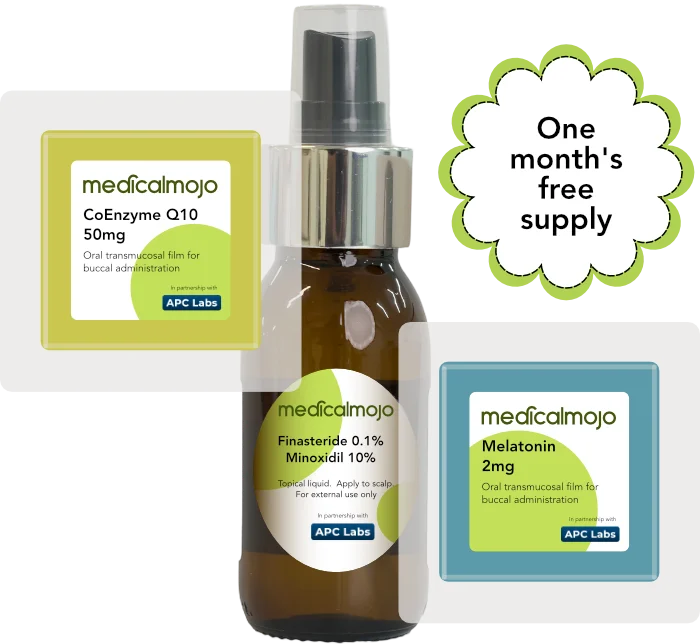
Disclaimer: This information is for educational purposes only and not a substitute for professional medical advice.
